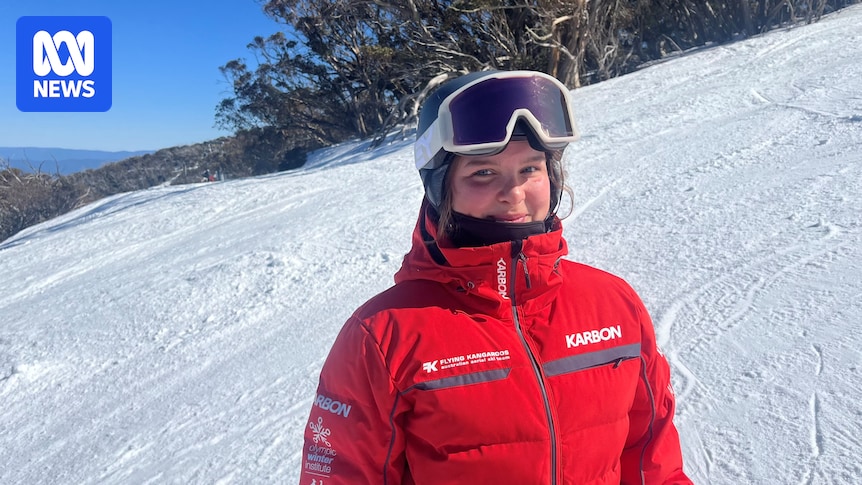
Chloe Saliaris, an 18-year-old former elite gymnast, is embarking on a challenging journey as she transitions into Australia’s renowned aerial skiing program. Despite her impressive background in gymnastics, Saliaris faces a unique hurdle: she must first learn how to ski.
“I’ve never skied before. I had seen the snow, but hadn’t really walked in it, so [it is a] very new environment for me,” Saliaris shared with ABC Sport, highlighting the daunting yet exciting path ahead.
Ski coach Danny Geiger, known for his expertise in transforming gymnasts into aerial skiers, believes that the skills and mental fortitude developed in gymnastics make for a smooth transition to aerial skiing. “You need hard work and commitment to the sport. Obviously, it is an extreme sport, so you need to be able to step into it and kind of let go of the fear and give it a good crack,” Geiger explained.
The Legacy of Aerial Skiing in Australia
The pathway from gymnastics to aerial skiing was first blazed by Kirstie Marshall, who claimed a world title in 1997. Her victory laid the groundwork for the current success of Australia’s aerial skiing program. On the Olympic stage, Australia has enjoyed over two decades of triumphs, starting with Alisa Camplin’s gold medal at the 2002 Salt Lake City Games. Lydia Lassila mirrored this achievement in Vancouver eight years later, and both athletes followed their golds with bronze medals in subsequent Olympics. David Morris added to the medal tally with a silver in 2014.
Remarkably, all these successes have been achieved without a single aerial skiing jump onto snow within Australia. Geiger attributes this to the country’s indomitable spirit. “That Aussie grit. I think we see it across in all sports,” he said. “That kind of Aussie mentality of getting in there and giving it your all, that’s what kind of separates us a little bit.”
Looking Ahead to Milano-Cortina 2026
As Australia prepares for the 2026 Winter Olympics in Milano-Cortina, the aerial skiing team is poised to lead the charge. At the end of the last Northern Hemisphere winter, four Australian women ranked within the world’s top 10: Airleigh Frigo in 10th, Abbey Willcox in fifth, Danielle Scott in third, and Laura Peel as the world number one. These athletes achieved a remarkable World Cup sweep, taking first to fourth place at the Deer Valley event in the United States.
Beyond the grit, Australia’s current athletes benefit from the Geoff Henke Olympic Winter Training Centre, a multi-million-dollar water jump facility in Brisbane. Opened in 2020, this world-class venue allows aerial skiers to train year-round, jumping into an Olympic-sized swimming pool with ramps that simulate the experience of sliding down a snowy mountain. This is a significant upgrade from the previous training site, a dam outside Lilydale in Melbourne’s outer north-east, where past Olympic champions honed their skills.
Challenges and Expectations
As Laura Peel heads into the upcoming Northern Hemisphere winter season, she carries the weight of expectations to qualify for her fourth Olympics and achieve a podium finish. Despite the pressure, Peel maintains a level-headed approach. “The Olympics is one day, it’s one jump for us, it can be over in three seconds, so I think it’s just about staying cool and trusting yourself in the moment,” she says. “We do all the tough physical work, we’ve got to do the mental work as well to cope with that moment.”
The opening ceremony for the Milano Cortina Winter Olympics is scheduled for February 6, 2026. With a strong team and state-of-the-art facilities, Australia is hopeful of fielding its most formidable Winter Olympic team yet, driven by the same “Aussie grit” that has propelled them to success in the past.







